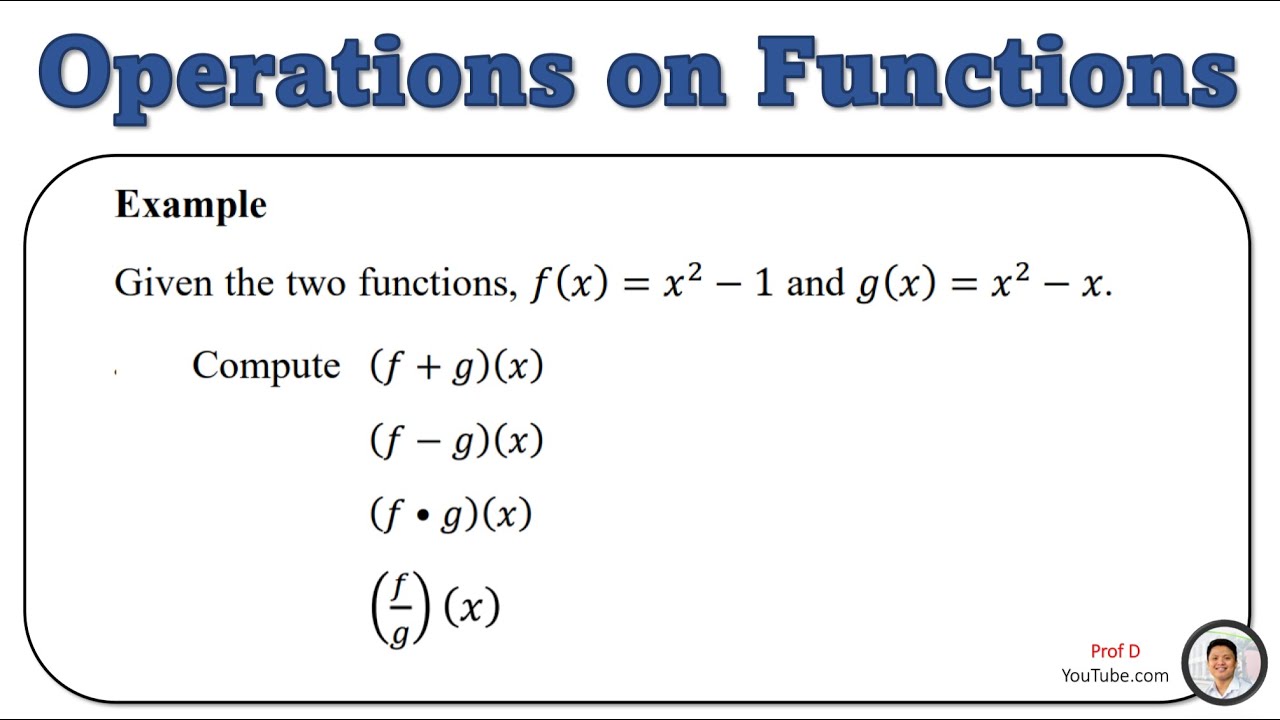Productos Notables | Binomio Conjugado | Suma por diferencia | Ejemplo 2
Summary
TLDRIn this educational video, the instructor explains the concept of conjugate binomials, focusing on the product of the sum and difference. The video provides detailed examples, breaking down the steps to solve such problems. The key takeaway is that conjugate binomials involve two terms that are identical except for their signs. The instructor emphasizes the importance of correctly identifying the terms and applying the formula, which involves squaring the first term and subtracting the square of the second. Additional exercises are provided for viewers to practice and improve their understanding of this concept.
Takeaways
- 😀 The video is about explaining the product of the sum and difference, focusing on conjugated binomials.
- 😀 It is the second video in a series, with more challenging exercises than the first one.
- 😀 The formula for the product of a sum and difference is explained, where the only difference between the two binomials is the sign in the middle term.
- 😀 The key to solving conjugated binomials is ensuring the two binomials are identical except for the sign in the middle term (one positive and the other negative).
- 😀 When solving a conjugated binomial, the result is always the first term squared minus the second term squared.
- 😀 The video emphasizes that it doesn't matter in which parentheses the positive or negative signs are placed, as long as the other parentheses have the opposite sign.
- 😀 The first example shows how to solve a conjugated binomial with terms like '4x²' and '8y³'. The process is explained step by step, focusing on exponentiation properties.
- 😀 A second example involves fractions and more complex expressions, such as '1/2 m⁵' and '3/4 n³'. The process of squaring these terms is also explained carefully.
- 😀 For fractional terms, both the numerator and denominator are squared, and exponents are multiplied accordingly.
- 😀 At the end of the video, viewers are given practice exercises to solve on their own, with solutions provided shortly after the exercises are shown.
Q & A
What is the focus of the video?
-The video focuses on explaining the concept of the conjugate binomial, specifically the product of the sum and difference of terms, as a notable product.
What is the key difference between the two binomials in a conjugate binomial?
-The key difference is that one binomial has a positive sign between the terms, while the other has a negative sign. The terms in both binomials must be identical, except for the sign.
How should we approach solving the conjugate binomial product?
-To solve the conjugate binomial product, we use the formula: (a + b)(a - b) = a² - b². The first term is squared and subtracted by the square of the second term.
What should we do if the terms in the binomials differ in any way, such as having different powers of a variable?
-If the terms differ, such as having x² and x³, the conjugate binomial formula cannot be used. The terms must be identical except for the sign.
How is the exponentiation applied when squaring the terms in a binomial product?
-When squaring a term with an exponent, each factor of the term is raised to the power. For example, (4x²)² becomes 16x⁴, and (8y³)² becomes 64y⁶.
In the first example, how is (4x²)² calculated?
-To calculate (4x²)², square 4 to get 16, then square x² to get x⁴. The result is 16x⁴.
How does squaring a fraction work in the conjugate binomial product?
-When squaring a fraction, both the numerator and denominator are squared. For example, (1/2)² becomes 1/4, and (3/4)² becomes 9/16.
How is the exponent rule applied when squaring terms like m⁵ and n³?
-When squaring terms with exponents, multiply the exponents. For example, m⁵² becomes m¹⁰, and n³² becomes n⁶.
What happens if the first term in the binomials is a fraction?
-If the first term is a fraction, both the numerator and denominator are squared separately. For example, (3/4m)² results in (3²)/(4²) * m².
What is the purpose of the final exercise in the video?
-The final exercise provides practice problems for viewers to apply the concepts explained in the video, specifically solving conjugate binomial products.
Outlines

This section is available to paid users only. Please upgrade to access this part.
Upgrade NowMindmap

This section is available to paid users only. Please upgrade to access this part.
Upgrade NowKeywords

This section is available to paid users only. Please upgrade to access this part.
Upgrade NowHighlights

This section is available to paid users only. Please upgrade to access this part.
Upgrade NowTranscripts

This section is available to paid users only. Please upgrade to access this part.
Upgrade NowBrowse More Related Video

Factoring Polynomials using Greatest Common Monomial Factor

Factorización suma o diferencia de cubos conceptos previos

Derivada de un producto | Ejemplo 2 consejo

Grade 11 | Operations on Functions | General Mathematics

Part 2-Rumus Cosinus Jumlah dan Selisih Dua Sudut

AP Precalculus – 4.2 Parametric Functions Modeling Planar Motion
5.0 / 5 (0 votes)